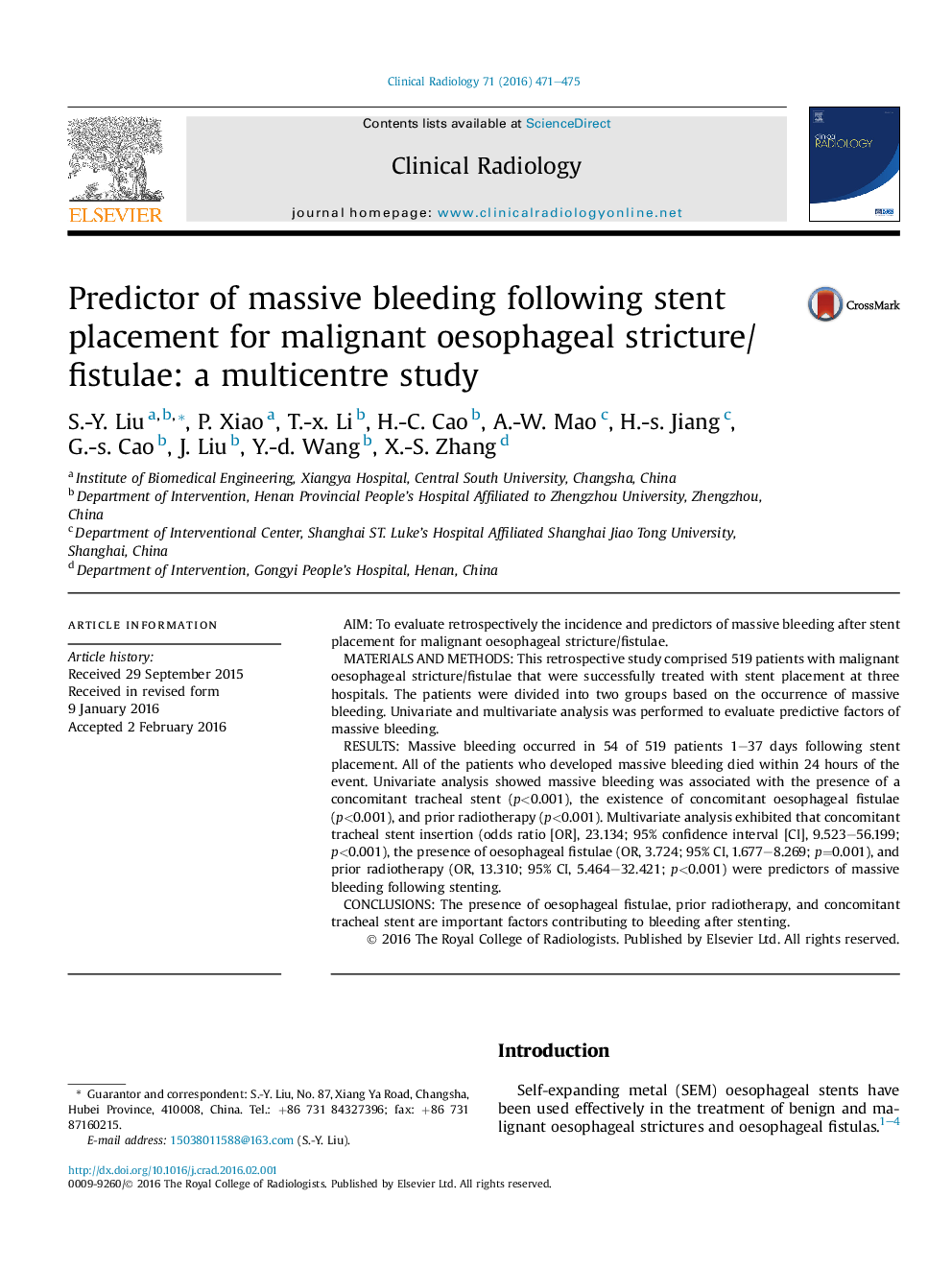| Article ID | Journal | Published Year | Pages | File Type |
|---|---|---|---|---|
| 3981201 | Clinical Radiology | 2016 | 5 Pages |
•This is the largest cohort of patients with bleeding after esophageal stenting.•The concomitant tracheal stent (p<.01) was a predictor factor for massive bleeding.•The esophageal fistula (p<.01) was the second predictor factor for massive bleeding.•Prior to radiotherapy (p<.01) was the third predictor factor for massive bleeding.
AimTo evaluate retrospectively the incidence and predictors of massive bleeding after stent placement for malignant oesophageal stricture/fistulae.Materials and methodsThis retrospective study comprised 519 patients with malignant oesophageal stricture/fistulae that were successfully treated with stent placement at three hospitals. The patients were divided into two groups based on the occurrence of massive bleeding. Univariate and multivariate analysis was performed to evaluate predictive factors of massive bleeding.ResultsMassive bleeding occurred in 54 of 519 patients 1–37 days following stent placement. All of the patients who developed massive bleeding died within 24 hours of the event. Univariate analysis showed massive bleeding was associated with the presence of a concomitant tracheal stent (p<0.001), the existence of concomitant oesophageal fistulae (p<0.001), and prior radiotherapy (p<0.001). Multivariate analysis exhibited that concomitant tracheal stent insertion (odds ratio [OR], 23.134; 95% confidence interval [CI], 9.523–56.199; p<0.001), the presence of oesophageal fistulae (OR, 3.724; 95% CI, 1.677–8.269; p=0.001), and prior radiotherapy (OR, 13.310; 95% CI, 5.464–32.421; p<0.001) were predictors of massive bleeding following stenting.ConclusionsThe presence of oesophageal fistulae, prior radiotherapy, and concomitant tracheal stent are important factors contributing to bleeding after stenting.
